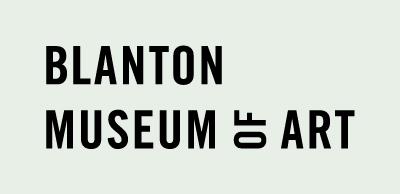Progress II [Progreso II]
Primary
Luis Jiménez
(El Paso, Texas, 1940–Hondo, New Mexico, 2006)
NationalityAmerican, North America
Date1976 (1999)
MediumFiberglass, resin and acrylic paint
DimensionsOverall: 125 3/4 × 261 × 136 1/4 in. (319.4 × 662.9 × 346 cm)
Credit LineBlanton Museum of Art, The University of Texas at Austin, Anonymous gift, 2011.51
Rights Statement
Collection AreaModern and Contemporary Art
Object number2011.51
On View
Not on viewLuis Jiménez’s sculptures, prints, and drawings view the history of the American West through the lens of personal and collective experience. Jiménez dedicated much of his career to creating public art that could be seen and appreciated by every one. This commitment to accessibility and social commentary aligns Jiménez with American and Mexican muralists of the Depression era, while his bright colors, industrial materials, references to popular culture, and depictions of those typically excluded from the American cultural narrative root his work in the Chicano movement. His monumental sculptures can be found today in public settings throughout the United States.
One of Jiménez’s first monumental works, Progress II, depicts a vaquero, or horseman from the Southwest or Mexico, as he wrangles a raging steer in a dynamic, gravity-defying composition. Jiménez’s treatment of his materials further generates a sense of momentum. Constructed from fiberglass and painted with automobile paint, the sculpture has the ultra-slick finish of a hotrod. Exploring themes of technological progress and westward migration, Jiménez depicts various modes of transportation. Horse, stagecoach, car, train, and airplane appear in The Progress Suite, a series of four prints made as companions to the sculpture.
“I am a traditional artist in the sense that I give form to my culture’s icons,” Jiménez once stated. “In the past, important icons were religious; now they are secular.” Icons of the American West—cowboy, “Indian,” horse, buffalo, steer—feature prominently in the sculptures and prints that comprise the Progress series. The theme of capture is also ubiquitous: the vaquero ropes a steer, a Native American hunts a buffalo, and a stagecoach whisks off a damsel in distress. Underneath the main components of the sculpture exists a smaller pursuit: an owl stalks a mouse. Jiménez depicts Manifest Destiny as a series of relationships between predator and prey that contributes to humanity’s march towards “progress.”
Exhibitions

![Progress II [Progreso II]](/internal/media/dispatcher/20461/preview)
























![Progress II [Progreso II]](/internal/media/dispatcher/20461/full)
![Fire Man [Bombero]](/internal/media/dispatcher/18837/thumbnail)
![Border Crossing [Cruzando el Río Bravo]](/internal/media/dispatcher/22432/thumbnail)
![Study for Border Crossing (Cruzando el Río Bravo) [Maqueta para Border Crossing (Cruzando el Río Bravo)]](/internal/media/dispatcher/14864/thumbnail)
![Longhorns [Cuernos largos]](/internal/media/dispatcher/14861/thumbnail)


